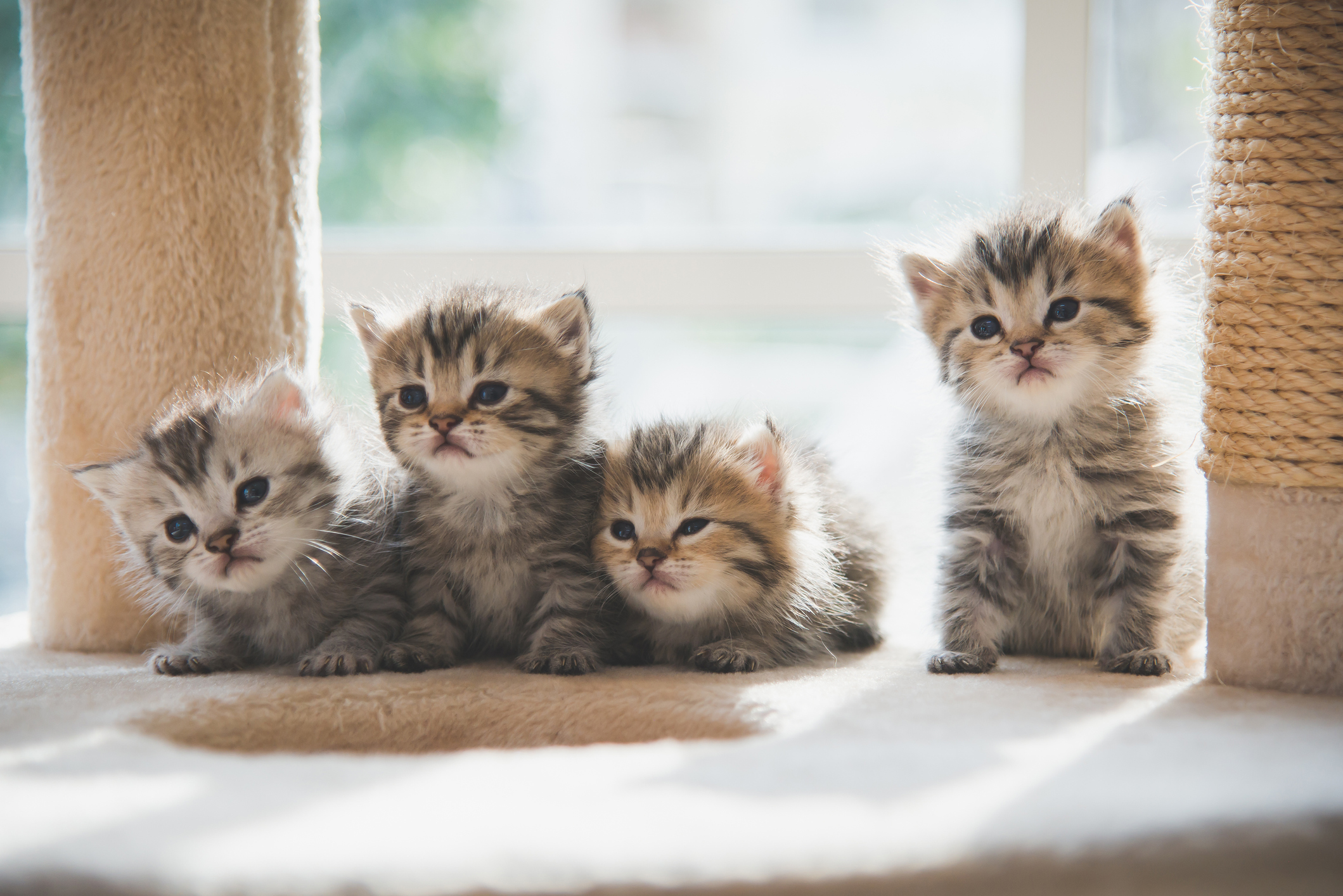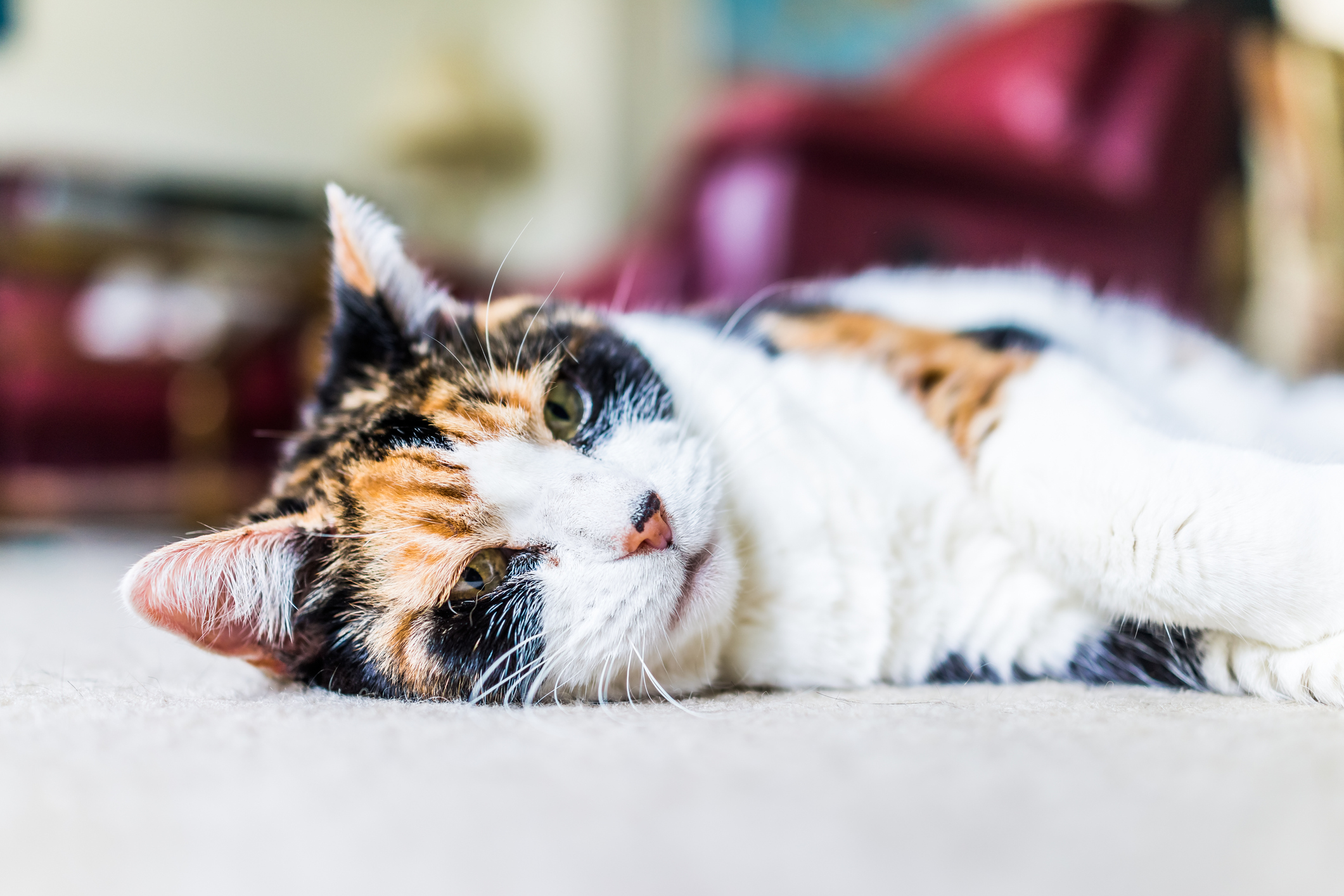
Are ‘Cat Years’ Real? Understanding Your Cat's Life Stages
People often talk about “dog years” when discussing their furry friends’ ages, but what about cat years? It’s understood that cats do not have the same life expectancy or aging process as a human does, but few understand how to tell when their feline friends have entered into a new life stage.
Pinpointing the exact age of your cat can be difficult, since there is currently no scientifically proven method that can be used to do so. However, experts believe the first two years of a cat’s life is almost equal to the first 25 years of a human’s, with each additional calendar year advancing your pet’s age by four cat years. By the time a kitten has reached the age of eight to ten months, they are already on the verge of cat adulthood!
Your cat’s life expectancy will be dependent upon several different factors, including their specific breed and whether your cat is predominantly an indoor or outdoor pet. Most indoor cats can live up to 18 human years, but certain breeds like Siamese and Manx cats can live past 20, which would be equal to about 90 cat years.
Although you may never be able to nail down your feline friend’s exact age, you can tell what stage of life your cat is in by monitoring their physical development and anatomical changes as they grow.
- Teeth: Your kitten’s first teeth will begin growing in when they are between two and four weeks old, and their permanent teeth should be in by the time they reach ten months. Over the next couple of years, tartar and staining will become visible on your pet’s teeth, indicating they have reached cat adulthood. When the staining is advanced and appears on all of the teeth, the cat is likely at least five years old. Teeth that are missing altogether is an indication that your cat is well into their senior years.
- Eyes: Once your cat has passed their 12th birthday, it is common for them to develop a cloudiness in their eyes that signals their advanced age. A clear, smooth iris indicates that your cat is still relatively young, while a serrated iris, eye discharge and tearing are signs of an elder cat.
- Bone structure: Just as humans gradually begin to slow down as the years pass, an older cat will be far less enthused about jumping, running and playing as much as they did during their youth, and they will begin losing muscle mass as a result. If your cat’s activity level has declined or their skin is beginning to sag over a noticeably boney frame, they have progressed into their senior years.
- Fur: The characteristics of your cat’s fur will also change over time. Younger cats hold on to their soft, sheen coat until they reach kitty middle-age (around seven years old). The fur of older cats will turn coarse and thick over time, and senior cats may even begin to grow gray hairs, just like humans.
Cat life stages
As your cat ages, so too will their physical and emotional needs and the level of care they require.

Kittens
Within their first year of life, young kittens will likely need a range of preventative care, from vaccinations to spay or neuter procedures. It’s very important to take young kittens to the vet to ensure their healthy development.
As your young kitten grows and begins learning basic skills, socialization will be a critical part of their development. While it is important to not over-stimulate your kitty with too much at once, exposing them to new things—including the other humans and pets that live in your house—within the first eight to ten weeks is essential. Natural socialization will also occur well into the first few years of your cat’s life, so don’t fret if your new kitten is a couple of months old by the time you bring them home.
Cat adulthood
By nature, cats are intelligent, savvy hunters. If your indoor cat isn’t sufficiently stimulated, their natural animal instincts and pent-up energy may eventually be directed at your home’s interior furnishings. Stocking a surplus of toys for your cat to play with, as well as larger objects like a cat condo that is designed for them to jump and explore, will go a long way in keeping your cat active, healthy and happy for years to come.

Senior cats
Older cats will grow to require more comprehensive medical attention, and continually monitoring your pet’s health as they age will be vital. Twice-yearly vet visits may be necessary to ensure you’re staying on top of any health problems.
Because your cat’s energy level will decrease, making small adjustments around the house will help them continue to live a joyful life even after they have slowed down. You may consider placing an additional water bowl near their favorite corner to reduce the distance they have to travel to take a sip. This will also serve as a gentle reminder to drink more water, which will help them avoid dehydration and the urinary tract infections that are common in older cats.
You might also begin to slowly transition their diet to the easy-to-chew and digest recipes that are commonly found in cat foods made specifically for senior cats. Your vet may advise that you begin supplementing their meals with additional vitamins and minerals to support their aging immune systems.
Give your kitty a joyful life from start to finish
By understanding the unique needs your cat will develop over the course of their life and how to identify when they’ve entered a new life stage, you’ll be better equipped to keep them comfortable and give your furry friend the life they deserve.


